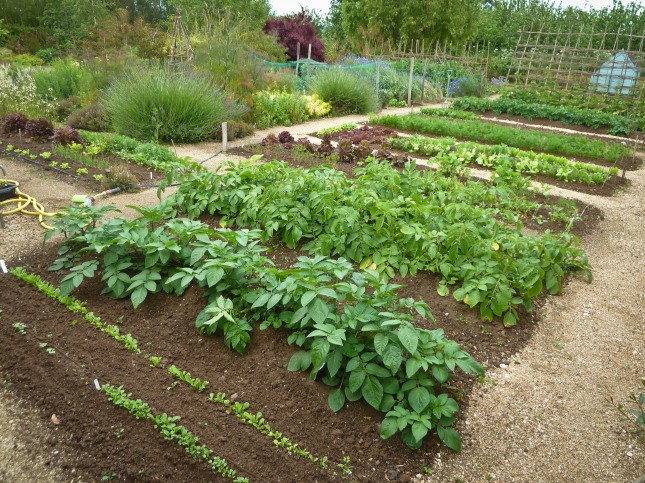Mr Middleton says: True gardeners never enjoy the fruits of their labours unless they can share them with others.
June-3rd WEEK
1. Careful with the Watering-Can!- Where watering is necessary it should be done with care. Do not water until you must, and then give a thorough soaking.
2. Finish Asparagus.- The cutting of asparagus should now be finished. To go on any longer only exhausts the plants. Run strings around the beds fastened to canes or stakes to provide some support for the stems which grow up.
3. Wage War on Pests.- Keep a watch for any pests on the various crops and deal with them as soon as seen. Do not regard them as an act of God which must be suffered in silence. Watch for caterpillars on cabbage and other brassicas.
4. Celery, Beans and Cauliflower.- Celery which is growing well should be fed with liquid manure and soot water. Dust old soot over the foliage to keep away the celery fly. Remove side shoots growing from the base of the plants. Broad beans should be pinched , as recommended earlier, to discourage black-fly attacks. Some of the earliest will begin to head up. Cover the heads by breaking a leaf and bending it over them.
5. Celeriac and Tomatoes.- Feed celeriac with liquid manure. They require a rich soil and much feeding. Tomatoes planted in the greenhouse now should give fruits well into winter.
6. Sow Final Carrots : Plant Leeks and Broccoli.- Make another sowing of short-horn carrots. This will probably be the last in the north, as sowings after June are rarely successful. Plant leeks as required. Plant broccoli, such as May Queen and Leamington.
7. Top-Dress Cucumbers.- The larger cucumbers growing inside should be top-dressed. Make a rich mixture of loam, leaf-mould, sand and fertilizer, and put on a thickness of an inch or two. Firm well with the palms of the hands.
9. Thin Out Fruit Trees.- Apples shed a proportion of their fruits naturally, and this is termed the June drop. Begin to thin apple fruit after it. If left unthinned they yield a large crop of small fruits.
‘True gardeners never enjoy the fruits of their labours unless they can share them with others.’ How very true. Mr Middleton was a man from my own heart. Sharing can be so satisfying whether it is with friends or your own family. I suppose by providing food for the table that you have grown can be seen as sharing. I sometimes give an odd lettuce to the lady who works in our local boulangerie. She always seems very grateful but for all l know her husband has them coming out of his ears too! That’s the problem. Anyone who is growing their own also have the same gluts and are also trying to part with their excess produce.Oh, the trials and tribulations us gardeners go through!
It will be the same with my courgettes soon, after all, there are only so many ways of cooking a courgette! Mr Middleton goes on to tell us to be careful with the watering can. Well, hopefully you don’t have to worry about that either this week. We have had some really good showers that has soaked the ground and with the warm temperatures everything is taking off.
Of course, the weather plays a part in everything we do in the garden and the above picture typifies this. Just a week or two ago we were all complaining about the hot, dry weather and the spinach that has gone to seed before it produced any good leaves is a result of that. Behind the spinach is a row of mange tout that l swear is growing before my very eyes. I know what sort of weather l would rather have for for my garden.
The carrot bed is coming along well too with the recent rain. I know l am going to have to protect them from the dreaded carrot fly soon. Every year presents the same dilemma. How do l protect them? I hate seeing sheets of white fleece 3 ft high in the veg plot but the alternatives have never been that good for me ie. the ‘happy bedfellows’ of the garden. I have tried growing onions, garlic, shallots and leeks near them in the hope that the scent from the onions will deter the fly but with little success. As an organic gardener l will not use a chemical spray so l suppose the fleece it is. Maybe if l dye it green that might help? Does anybody know of any other organic deterrent?














